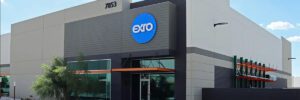
A large-scale system for efficiently recycling batteries will be a critical part of the new clean energy ecosystem. However, battery manufacturers and automakers may well be concerned that recycled products may be lower in quality than those built from newly mined minerals.
Now a team of researchers has developed a recycling method that involves refurbishing the cathode, and they claim that batteries they made with their new technique perform just as well as those with a cathode made from scratch—or maybe even better.
Yan Wang, a materials science professor at Worcester Polytechnic Institute, and co-authors, describe their work in a paper published in Joule (via Scientific American).
Current recycling methods typically involve dismantling and shredding the entire battery, then either melting it down or dissolving it in acid to produce black mass, from which chemical elements or simple compounds can be extracted. The recovered chemicals then go through the standard manufacturing process to make new cathodes.
Professor Wang and his colleagues use a similar process, but they keep some of the components of the cathode intact. After shredding the battery, they physically remove the less-valuable parts (such as the electronic circuits and steel casing) and recycle them separately. Most of what’s left is the cathode material, which they dissolve in acid and purify. Next, they add carefully-calibrated amounts of fresh elements such as nickel and cobalt, ensuring that the ratio of ingredients is optimal. The result is a “refreshed” cathode powder, which can be used in a new battery.
Slight changes to the structure or composition of a cathode can compromise performance, Professor Emma Kendrick of the University of Birmingham (who was not involved in the new study) explained to Scientific American. Thus, much of the cathode powder’s value is “in how you’ve engineered the particles [of powder] in the first place.”
Wang and his colleagues compared the particles in their recycled cathode powder with those in commercially manufactured cathode powder, and found that their powder particles were more porous. This reduced cracking, which is a major cause of battery degradation. More pores also mean more exposed surface area, which can enable faster charging.
Linda Gaines of the Argonne National Laboratory (not involved in the new study) told SA that “the cathode they can make is as good as—or even better than—the commercial material that we’ve been importing.”
Professor Wang has co-founded a company called Ascend Elements to scale up the new recycling process. The company recently announced plans to open a battery recycling facility in Georgia later this year, where it will recycle lithium, cobalt and nickel.
Source: Scientific American
from Charged EVs https://ift.tt/3lXNwFx


No comments:
Post a Comment